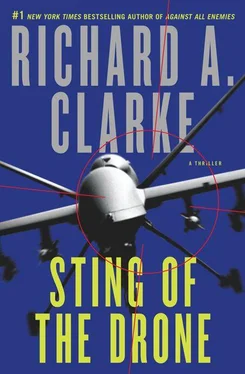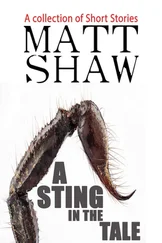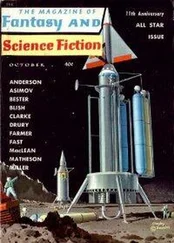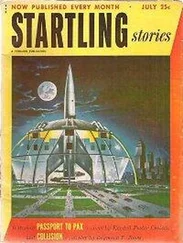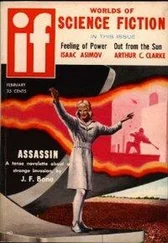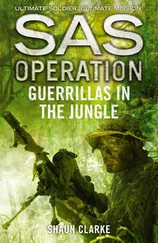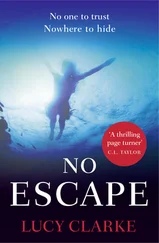Caspar Six Charlie was about to fly into Libyan airspace.
MONDAY, NOVEMBER 23
PEG HEADQUARTERS
NAVY HILL
WASHINGTON, DC
It took only fifteen minutes, driving against the last of the rush-hour traffic, for Bowman to get to his office. The Kill Call videoconference was already up on the ten flat screens on the wall of his conference room. On the largest screen, he saw a single aircraft, a four-engine military cargo plane, sitting on an airstrip in a desert. “What have we got?” he asked as he sat down.
“We followed this AN-24 from Beirut International. CIA sources say it belongs to Hezbollah and is used to run guns throughout the region.” It was Sandra’s voice, coming from Las Vegas. “It’s now on an airstrip in the Libyan desert. As you can see, it’s being loaded from that storage bunker across the way. We believe that bunker is used to store chemical weapons, specifically VX nerve gas in artillery shells.”
The NSA officer on screen chimed in. “We can confirm the aircraft is run by Hezbollah. And that Libyan military communications has in the past referred to Special Weapons being stored there. That is their jargon for their chemical weapons.”
“Lovely,” Ray said over the network connection.
“One more thing,” Sandra added. “The Sea Ghost UAV we have giving us this image is a reconnaissance bird off the USS Lincoln in the Med. It’s unarmed. No missiles.”
“So what are our options?” Ray asked.
An Admiral at the Pentagon replied, “We recommend flying the Sea Ghost into the Antonov, ramming it, either on the runway or, better yet, in the air over the desert. The Sea Ghost has a jet engine. It can catch up with the Antonov once the cargo plane takes off.”
“Wouldn’t that spill the nerve gas?” the Justice lawyer asked.
“Most of it would burn up,” the Admiral answered.
“But not all of it?” the lawyer questioned.
“No, not all of it. Some would be vented, some would be ejected beyond the thermal zone,” the Admiral admitted.
“So what?” the State Department representative said. “Get real. The alternative is having the Hezbollah terrorist group getting its hands on nerve gas. They will use that against Israel, an American ally. The choice is between maybe killing a few camels in the middle of the desert or wiping out thousands of Israelis. That’s a no-brainer.”
“Legally, I don’t think it’s justified,” the lawyer responded. “We do not know that Hezbollah will use the nerve gas. Doing so would trigger an enormous Israeli response. Hezbollah probably just wants it as a deterrent, to stop Israel from attacking it again. Moreover, we oppose using ‘U.S. interests’ as grounds for using the drones. It should be a group committed to killing Americans. Is Hezbollah?”
No one answered.
“Well, you are right about one thing,” Ray finally said. “Our original guidance from the President was that we could use the UAV program to stop attacks against ‘U.S. interests.’ The proposed new guidance would drop that. We could only act against groups engaged in attacks on Americans. So, CIA, does Hezbollah engage in attacks on Americans?”
The image on the large screen showed the trucks driving away from the Antonov. The ramp from the rear clam doors was pulled back into the aircraft.
Ray could see the CIA officer on another, smaller screen talking to others off camera, but he could not hear their conversation. Their microphone was on mute. After a few minutes, the CIA man said, “Not in recent years. Hezbollah did kill Americans in the 1980s and was involved in the Khobar Towers attack on Americans in Saudi Arabia in 1996, but we have not seen an intentional attack aimed at Americans since then.”
“Ray, that proposed new guidance is just that, proposed. It is under discussion, not adopted. State feels strongly that we have to act to defend U.S. interests, our allies, and not just ourselves,” the woman from the Department of State explained.
Puffs of smoke rose from two of the propellers on the aircraft and then the rotors on two of the four engines began to spin. “All right. I am going to need the official, final view of each of your departments in the next very few minutes. Check up your tapes.” He then muted his own microphone and stepped off camera. He picked up his drop line to the National Security Advisor, who answered it personally on the third ring. Ray quickly summarized the situation.
When he was done, Burrell answered quickly. “Ram the fucker.”
“Winston, under the new guidance proposed by the Attorney General, he dropped protecting ‘U.S. Interests.’ He believes we should only attack those who pose an imminent threat to American citizens,” Ray noted.
“Raymond, there are Americans all over Israel. Probably a million Israelis are also American citizens, hold U.S. passports,” Burrell said. “Besides, whatever the President’s guidance on UAVs might be, his orders to me on protecting Israel are very clear. He’d be crucified if he could have stopped Hezbollah from getting CW and failed to act. Ram the fucker. Understood?”
Raymond Bowman saw the third and fourth engine start to spin and the aircraft begin to move slowly onto the runway. “All right, people. We have a decision. We will intercept the Antonov over the desert.”
The Justice Department representative hit her Request to Speak button. “The Attorney General does not concur. Such a move would be outside our recommended legal parameters.”
No one else spoke. “Noted for the record,” Ray said. “GCC, you are instructed to fly the Sea Ghost into the Antonov in such a way that the Antonov crashes or explodes over the desert.”
“Understood,” Sandra replied.
The conversation on the conference call stopped. Everyone on the network watched silently as the Sea Ghost camera tracked the AN-22 taking off from the airstrip. The image on the large screen from the UAV’s forward-looking camera showed the Antonov from behind, its four turbo-prop engines spinning as the aircraft climbed. The distance between the Sea Ghost and the AN-22 began to close.
“We’re going to fly above the Antonov and then dive into it from about five thousand feet above it,” Sandra said. “It should split in two and then explode. It’s going to be over open desert, empty desert, for at least the next hour, but we should be in position to ram in about ten minutes.”
The forward-looking camera no longer showed the AN-22, as the Sea Ghost climbed. The screen showed very bright blue, cloudless sky.
“We will have to tell the Libyans. This transfer of chemical weapons was probably not approved by the government in Tripoli, probably a rogue officer selling the stuff,” the State Department officer commented. No one replied.
Then the image on the screen shifted, spun, and became a view of the desert below. “What the hell was that?” Ray asked.
“The Sea Ghost is in a sharp dive,” Sandra said. That much was apparent. The ground was rushing up fast. Then the screen went black. “The Sea Ghost just flew straight into the ground.”
“Why?” Ray asked. “How?”
“I don’t know,” Sandra replied softly.
“Holy shit,” the Admiral said into an open microphone.
There was a long silence on the network.
“Admiral?” Ray called.
“Yes, sir?”
“Contact the Kirya op center directly,” Ray ordered. “Give them an intercept vector.”
“Roger that,” the Admiral replied.
“What is the curio, or whatever you called it, if I may ask?” the Justice representative asked.
Ray stood up and began to walk out of the room. As he got to the door, he heard someone on the call answer the question. “Headquarters of the Israeli Defense Force.”
Читать дальше
